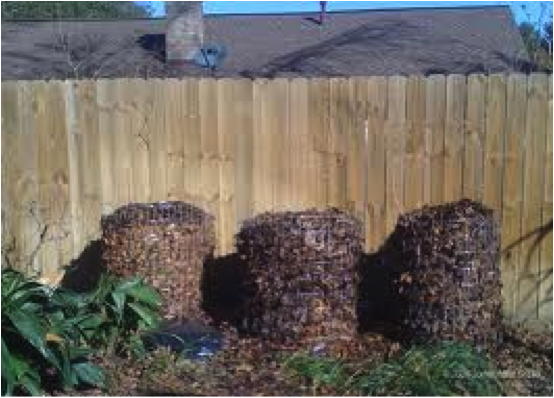Will it ever rain? That’s recently been the number one question on the mind of most Bay Area gardeners. Here we are in November and barely a drop has fallen from the clouds. Are we experiencing a drought? Climate change?
What’s a gardener to do?
The lack of precipitation is a major concern, especially when we consider that 55-75 percent of the 174,000 gallons/year of water used by the average household is for landscaping. Getting moisture into the ground, and keeping there should be a major priority for all California gardeners.
In this installment of Everyday Soil Science, I will address the use of mulch to improve the moisture holding capacity of your soil. Mulch, for the purpose of this discussion, is any material spread over the soil surface to protect soil quality and preserve soil function. Using this definition, mulch is confined to organic materials like chipped or shredded wood waste, wood shavings, saw dust, pine needles, bark chips, straw, grass clipping, leaves, mixed plant debris (aka chipper trash), cardboard, newsprint, and compost. Notably not included are geotextiles, plastic sheeting, and rock.
Maintaining three or more inches of mulch around plantings and over open areas can increase the moisture holding capacity of some soil types by as much as 500 percenet. As we start looking for ways to conserve every drop of moisture, mulch stands alone as the easiest, quickest, and most cost-effective landscape technique to conserve water.
Everyone, say it with me now: “Mulch, mulch, mulch!”
Using mulch in the landscape is by no means rocket science, but it requires sticking to a few basics and a little common sense. Below are the mulch basics recommended by the Bay-Friendly Landscaping & Gardening Coalition.
Mulch Basics
1. Prepare the site before applying mulch, by removing weeds and moistening thoroughly. Yes, you need to get some moisture into the soil initially to hold there.
2. Replace grass with mulch under trees and around poles. If you don’t already know this, you should: Grass and trees don’t mix! Eliminate grass around trees by six feet to mimic the way trees grow in nature. Utilize the leaves that accumulate under trees as a mulch source.
3. Keep mulch six (6) to 12 inches away from the base of shrubs and larger plantings. Retaining moisture too close to the base of any plant can be a recipe for disease and rot. Place mulch so that you see that the root flare keeps the base dry.
4. Choose the application rate that will give you the best results.
- Apply a layer that settles to two (2) to four (4) inches deep. This is considered the best general application rate, especially for use in planting beds. Bay-Friendly Rated Landscapes require a minimum of three (3) inches of coarse mulch.
- Fine Mulch: Apply no more than two (2) inches. Thin layers of mulch (those having a particle size of less than half an inch) are less likely to impede air and water. Fine mulches decompose more quickly and need to be replenished more often than coarse-textured mulches.
- Coarse Mulch: Use four (4) to six (6) inches or more to control weeds in open spaces. Coarse mulch is best for weed control; it prevents annual weeds from germinating while also preserving soil moisture. To maintain weed control and moisture retention, replenish once per year.
- Reduce the thickness of mulch on poorly drained soils to avoid the development of anaerobic conditions.
- Keep mulch on the soil surface to prevent nitrogen withdrawal. Avoid incorporating any woody material into the soil profile.
For complete information about utilizing mulch to conserve water order a copy of “A Bay-Friendly Guide to Mulch” available on the Bay-Friendly Landscaping & Gardening Coalition website: www.BayFriendlyCoalition.org.
Rain or shine… it’s time to mulch, mulch, mulch!
~The Soil Sommelier



